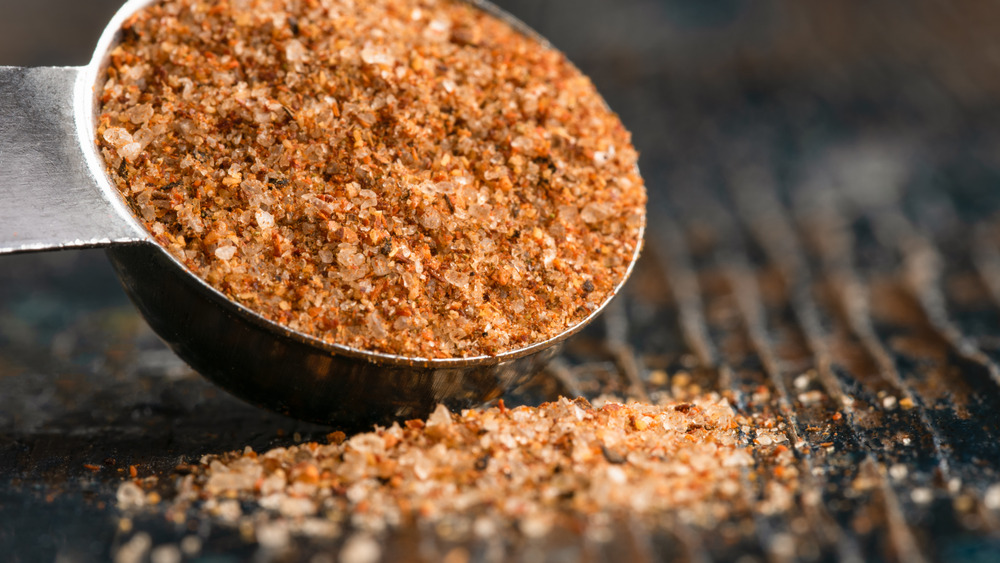The Real Difference Between Cajun And Creole Seasoning
As you stand in the spice aisle wondering which seasoning may be able to invigorate tonight's chicken, you might consider Cajun or Creole blends. Both options deliver a massive amount of flavor, but there are distinct differences to be aware of and nuances that will take the taste of your meal in one direction or another.
To understand the difference in these spice blends, a little history helps. According to HuffPost, the word Cajun comes from "les Acadians," which is a term for French colonists in Canada (Acadia to be exact) that later moved to Lafayette, Louisiana. The term Creole, on the other hand, refers to the community of people with a lineage to early settlers in French colonial Louisiana, namely New Orleans.
The official tourism site for New Orleans adds that Cajun food is a commingling of French and Southern cuisines and the flavors are rustic, robust, and great with meat, sausage, and rice (think jambalaya). Creole food, however, is considered more "cosmopolitan" and was crafted in New Orleans with inspiration from European countries (largely from France), as well as Africa and the Native Americans. Creole cuisine is great for rich sauces and stews like gumbo and fresh seafood.
LouisianaTravel.com further explains that while the two cuisines share many of the same ingredients, Creole cuisine is often dubbed "city food" while Cajun dishes are considered "country food."
Are Cajun and Creole seasonings interchangeable?
To further explain the difference between these two cuisines, The Spruce Eats explains that country-style Cajun cooking relies on affordable, local ingredients like meat, lard, and peppers, while the Creole cuisine features heavier ingredients like cream and butter, with seafood, tomatoes, and fresh herbs.
So how does each cooking style translate to their namesake spice blends? Hungry Howie's explains that Cajun seasoning brings in the heat by boasting a variety of peppers — such as white, black, cayenne, and bell — and most blends contain paprika, onion, celery, and garlic. Reach for a Creole blend and you'll likely find a more profound (and overall milder) herbal medley consisting of oregano, bay leaf, basil, thyme, rosemary, parsley, and paprika.
So, are the spice blends interchangeable? Yes! Chili Pepper Madness explains that any Cajun seasoning blend can be used in place of Creole seasoning, and vice versa — though the former will have more kick. If you feel like raiding your spice rack, you can also make your own blend by combining the ingredients listed above.

